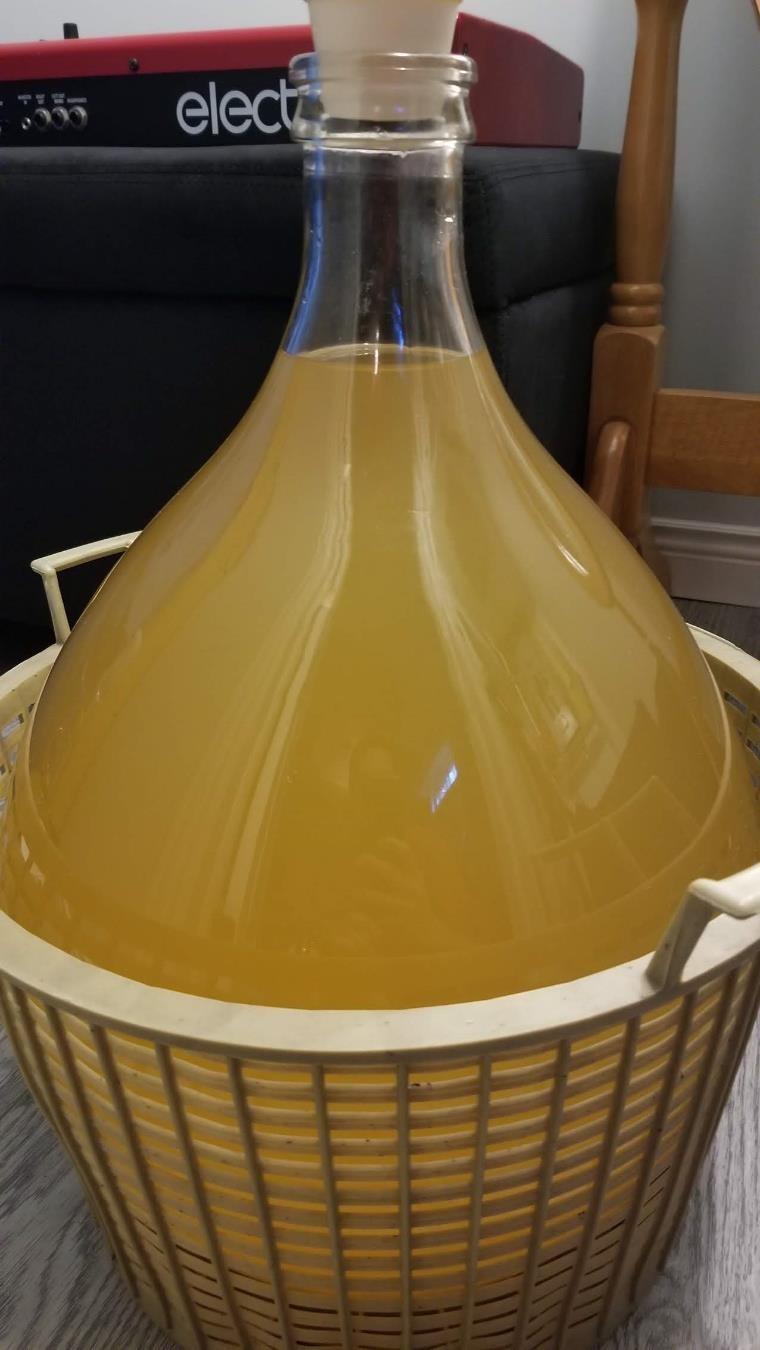Hi Everyone,
Newbie cider maker here - started with fresh pressed apple juice (we pressed them ourselves), added Campden tablets to kill off the natural yeast, pectic enzyme, sugar and yeast nutrient. Next day I added champagne yeast. Still not clear on how to use hydrometer but I believe OG was 1.040 before I added the sugar. I let the juice ferment in a Demijohn for 2 weeks and after checking there were no signs of continuing fermentation, and taking another gravity reading which was 1.000, I racked off the cider into a smaller demijohn (15L) to reduce the head-space.
Here are my questions -
1. I know at this point I can start drinking the cider, but is it best to let it age further - say another 2 weeks to a month? What would I be looking to accomplish by letting it sit in secondary?
2. Also, I have heard that head-space can lead to spoilage, which is a bit confusing to me. My grandfather made wine since the dawn of time, and he would attach a syphon with a tap to the demijohn and leave it in the cold cellar and fill bottles as needed, and he never had any spoilage. If I did the same thing, am I running the risk of spoilage? Is it best to fill gallon jugs/bottles once I am ready to start drinking it?
3. When (if at all) should I add Campden tablets again to stabilize the cider?
I've attached a picture of my cider sitting in secondary.
Appreciate the help!
Thanks,

Nick
Newbie cider maker here - started with fresh pressed apple juice (we pressed them ourselves), added Campden tablets to kill off the natural yeast, pectic enzyme, sugar and yeast nutrient. Next day I added champagne yeast. Still not clear on how to use hydrometer but I believe OG was 1.040 before I added the sugar. I let the juice ferment in a Demijohn for 2 weeks and after checking there were no signs of continuing fermentation, and taking another gravity reading which was 1.000, I racked off the cider into a smaller demijohn (15L) to reduce the head-space.
Here are my questions -
1. I know at this point I can start drinking the cider, but is it best to let it age further - say another 2 weeks to a month? What would I be looking to accomplish by letting it sit in secondary?
2. Also, I have heard that head-space can lead to spoilage, which is a bit confusing to me. My grandfather made wine since the dawn of time, and he would attach a syphon with a tap to the demijohn and leave it in the cold cellar and fill bottles as needed, and he never had any spoilage. If I did the same thing, am I running the risk of spoilage? Is it best to fill gallon jugs/bottles once I am ready to start drinking it?
3. When (if at all) should I add Campden tablets again to stabilize the cider?
I've attached a picture of my cider sitting in secondary.
Appreciate the help!
Thanks,

Nick

